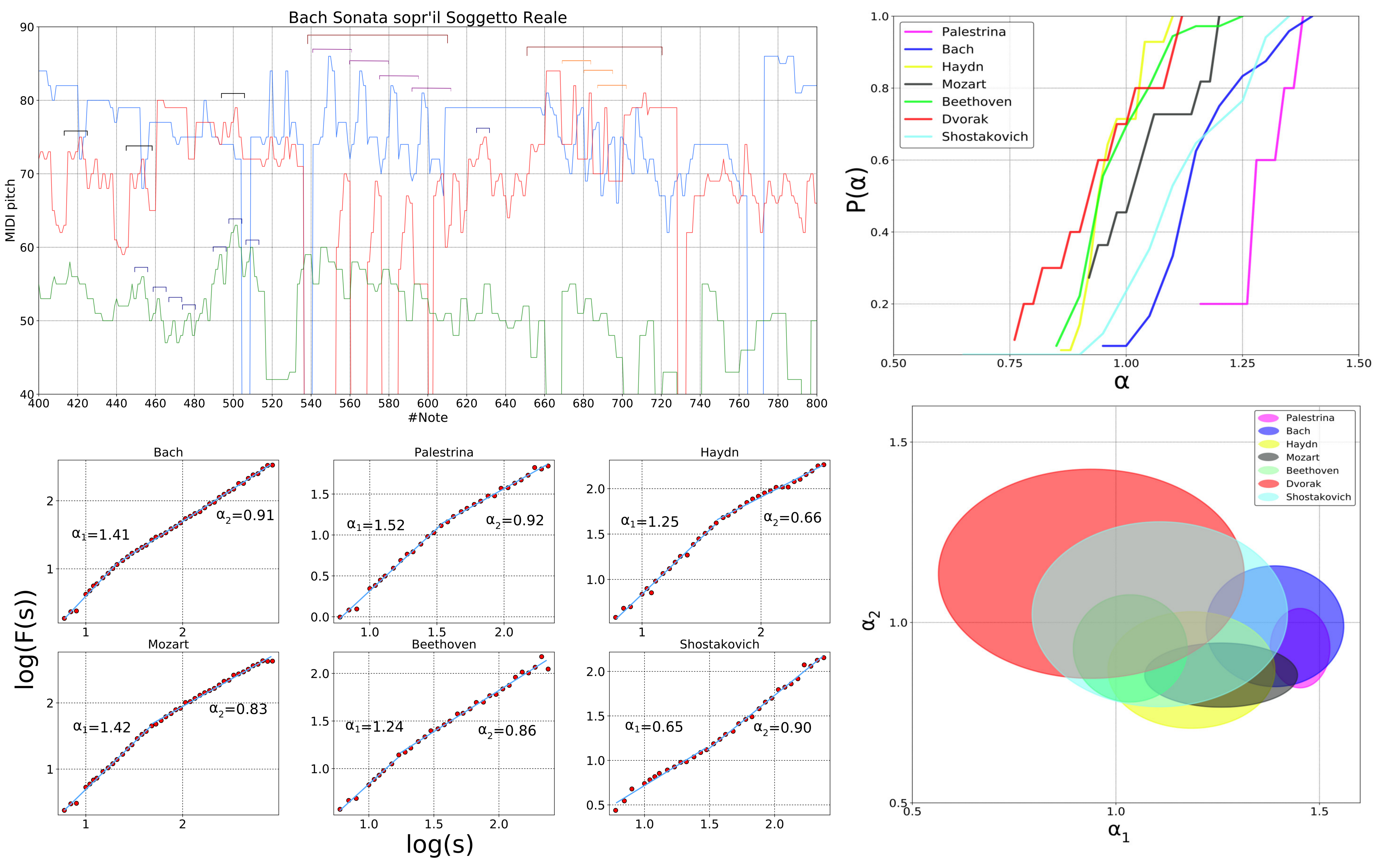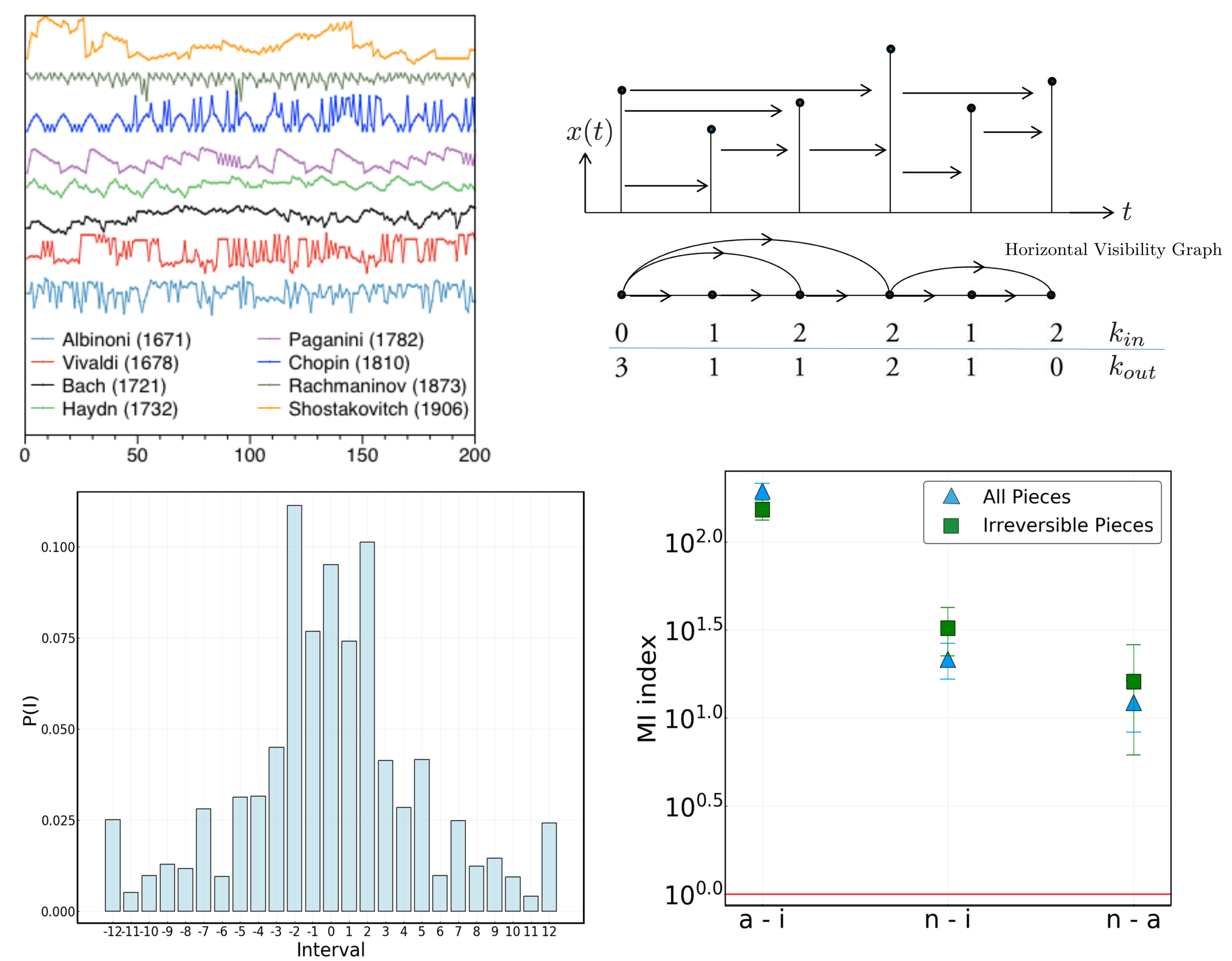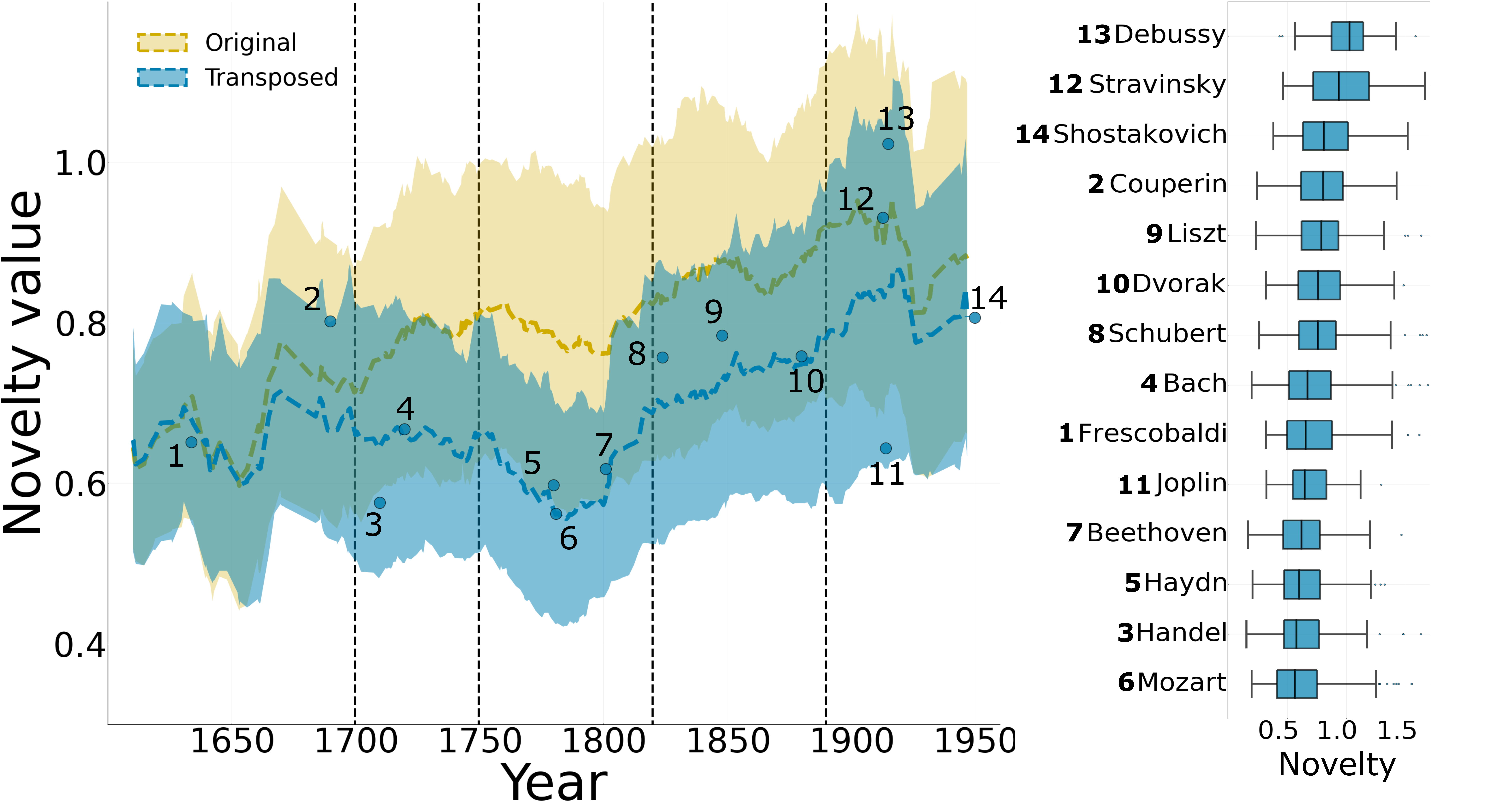Music Evolution
Complex Systems and Computational Methods in Interdisciplinary Research
During my PhD and postdoctoral years I worked doing research related to music from a Statistical Physics and Complex Systems perspective.
Music is a cultural phenomena that emerges from social and cultural interactions with individual and collective implications. It’s multi-scale and multi-factorial characteristics makes music a very appealing subject of study to understand problems related not only to socio-cultural behavior and evolution but also to cognitive processes such as creativity or innovation.
For this reason, identifying, quantifying and characterizing musical features is essential to explore more complicated aspects like cultural evolution or innovation.
Scaling and Nonlinearity in music scores
The auto-correlation function of a signal contains information about its structural properties. The scaling behavior of the auto-correlation function has been related to pleasantness in music ( noise) in previous studies. Here we show that there are different types of scaling behavior in music that were not documented before: two scaling regions and no clear scaling, we also show that having scale invariance ( noise) is not enough for music to be considered pleasant, finding that nonlinear features could play an important role in music enjoyment.

Read the paper here.
Musical narrative and the arrow of time in western classical music
Musical narrative -the sensation that music has a direction to go- generates expectation, however musicologists argue that for music to be pleasant it should have a balance between expectation and surprise. In this work we quantify irreversibility -the directionality- in melodies and relate it with interval asymmetry, finding a clear correlation between both quantities. We found that irreversibility is a universal property in music and is also related to nonlinear features that could be relevant to music enjoyment.

Read a Scientific American article about this work here or read the original paper if you prefer.
Music innovation and evolution of harmony in western classical music
Creativity and innovation are concepts difficult to define and quantify. Music offers a way to indirectly measure features related to innovation. Using a local key representation in musical pieces we quantify innovation in key transitions over 500 years. This framework allows also to quantify properties related to key diversity and key uncertainty, the latter one closely related to tonal tension and harmonic complexity. We identify trends in history as well as in personal development within specific composers.

Paper: Preprint
Frequency-dependent selection in music listenings
Can we identify evolutionary signatures in social and cultural behavior? Can we understand underlying mechanisms when choosing what music to listen to, within the framework of evolutionary theory? – here we use evolutionary theory concepts to identify and measure frequency-dependent selection in listening histories.